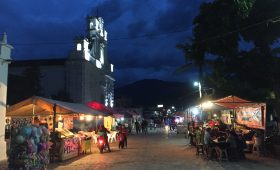Exploring Conkouati-Douli National Park
Conkouati-Douli National Park in the Republic of Congo is a destination for those seeking to experience rich biodiversity and cultural heritage. Established in 1999, the park spans 7,955 square kilometers, including both marine and terrestrial environments. Managed by the Ministry of Forest Economy and Sustainable Development in partnership with the NGO Noé, the park is a testament to conservation efforts and community involvement.
Wildlife and Biodiversity
The park is home to a diverse range of species. It is a priority site for great ape conservation, hosting around 7,000 central chimpanzees and 900 western lowland gorillas. Forest elephants, buffaloes, leopards, and red river hogs also inhabit the area. The park’s marine section is significant for its endangered turtle populations and a group of approximately 100 humpback dolphins. Bird enthusiasts will find the park designated as an Important Bird Area, supporting numerous bird species.
Flora and Ecosystems
The park’s landscape is characterized by dense forests, wetlands, and lagoons. Notable plant species include Rhizophora racemosa and Avicennia nititta mangroves. The savannas feature Ctenium newtonili and Elytonrus brazzae, among others. The Noumbi River flows through the park, contributing to its ecological diversity.
Cultural Insights
The park is not only a haven for wildlife but also a cultural hub. Approximately 7,800 people live in and around the park, divided into 31 villages. The coastal Vili people, known for their fishing and trading heritage, have been in the region since the 13th century. The forest road villages host a mix of over 30 ethnic groups, reflecting the area’s rich cultural tapestry.
Visiting Tips
The best time to visit is during the dry season, from June to September, when wildlife sightings are more frequent. However, each season offers unique experiences. To reach the park, fly into Brazzaville and arrange transportation in advance. Options include domestic flights or road trips, with guided tours or car rentals available for local exploration.
Challenges and Considerations
Visitors should be aware of the park’s vulnerability to industrial threats such as logging and mining. Conservation efforts are ongoing, but responsible tourism is crucial. Plan your visit with respect for the environment and local communities, ensuring a positive impact on this unique ecosystem.




